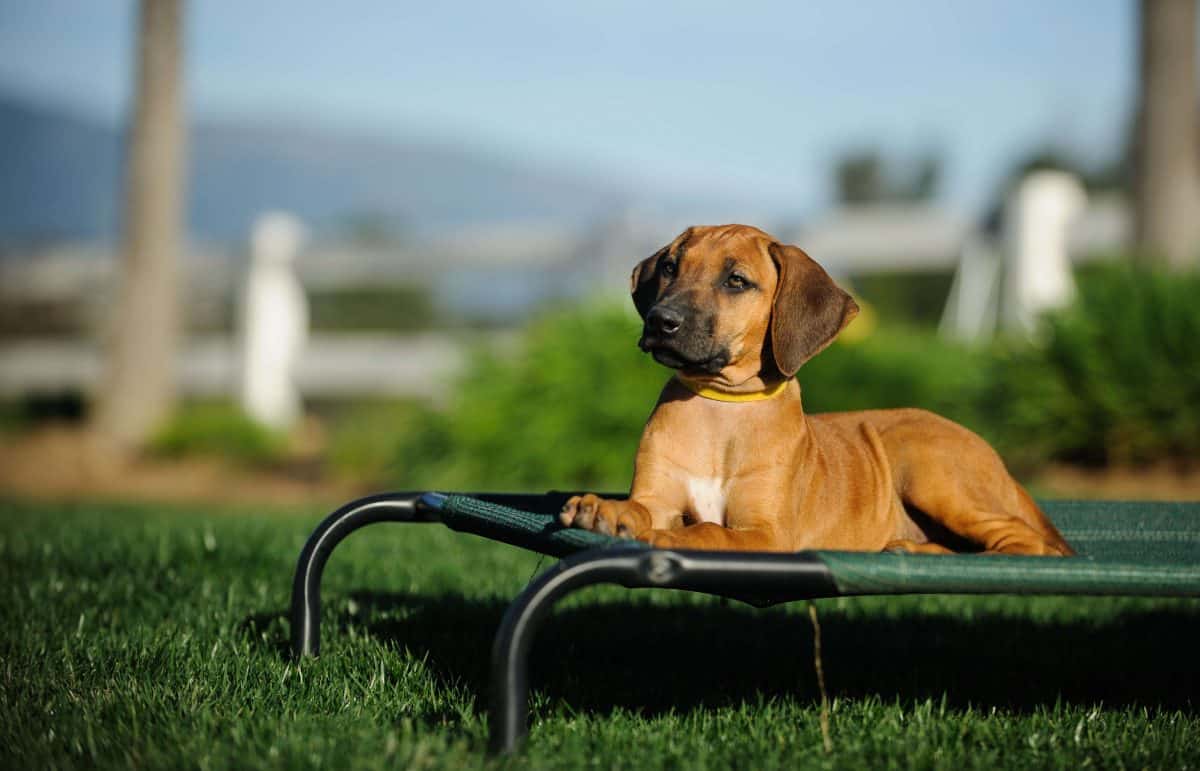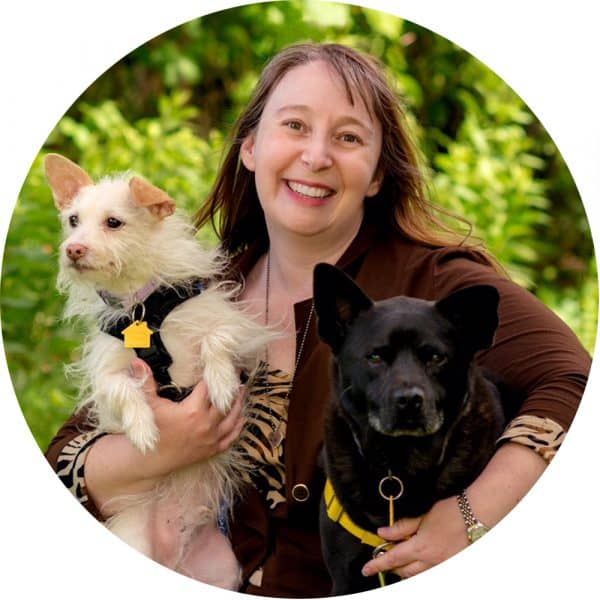How To Teach Your Dog To “Station”

One of the first skills students at our school learn to teach is Station. This skill can go by many names such as Place, Mat, Climb, Bed, etc. What you call it is up to you. Here at The Academy of Pet Careers we call it “Station.” First you must decide on a defined spot that will be the station. At the APC we use a raised cot. But at home you might use the dog’s bed, a blanket, or even a bath mat that is placed where you want your dog to settle. Then we teach the dog to get on the Station and lie down. Once they can do that, we build duration. This teaches them to settle in and wait until we give them permission to get off.
Training the "Station" Cue
Step One: Interaction
How do we train this skill? You can free-shape the behavior simply by marking and rewarding with a bite of food for every interaction the dog directs at the Station. If she looks at the Station, CLICK and treat. If she moves toward the Station, CLICK and treat. If she sniffs the Station, CLICK and treat, and so on until she’s climbing onto the station readily. Free shaping allows the dog to explore her environment and when she stumbles onto a behavior that is in the general direction of our goal behavior, we acknowledge and reinforce that behavior.
This can be a fun activity, but it can also be time consuming. I prefer to move the process along a little faster. So I allow the dog to explore the environment until she shows some curiosity about the Station, but at that point, instead of handing her a treat, I toss the treat right onto the Station. This increases the dog’s interest in and engagement with the Station, and ultimately speeds up the process of getting her to climb on.
Step Two: Sit
Once the dog is readily getting onto the Station, I wait to see if she’ll Sit. The first time she does, I CLICK and give several treats in a row (jackpot!) to make it really clear that I love this behavior. Then I invite her off the Station and allow her to approach, get on and choose to Sit again. When she’s consistently Sitting on the Station, then I’ll wait again and see if she’ll Lie Down. If she does, I’ll jackpot! If she doesn’t, I’ll help her by asking for, and if necessary, luring a Down.
Step Three: Duration
Once the dog is consistently getting on the Station and lying down, I start to build duration. If she remains lying down for 3 seconds, I’ll CLICK and treat. If she stays another 8 seconds, I’ll CLICK and treat again. And so on, building up to a settled Down-on-Station.
But, be careful that your dog isn’t deciding when to get off the Station on her own. Each time you’re ready for her to get off the Station, give her a “release” cue. Here at the APC, we say “Free!” But you can use any word you like. I’ve heard “Release”, “Done”, and “Finish” all used for the release cue. Avoid using the word “OK” because it’s far too common in our daily conversation.
Why You Should Teach "Station"
This is an excellent skill for when guests arrive or when you’re eating dinner. You can train your dog that the knock or doorbell is the cue to get on their Station. Or you can tell your dog to Station as the family sits down to a meal and they will go settle in on their special spot. New parents will often use Station with their dog while doing Tummy Time with their human child. This allows the dog to be part of the activity but settled at a safe distance from delicate little ones. And the best thing about Station is that if you’re using something portable, you can take the Station anywhere and cue your dog to settle in at a friend’s house, when out camping, or even at an outdoor eating area.
Author - Jody Epstein
Jody Epstein is a certified behavior consultant, certified professional dog trainer, and holds a master’s degree in animal behavior from Tufts University. She has been training professionally for more than 12 years and is pleased to be part of the Academy of Pet Careers team, teaching the next generation of trainers. Look out for her blogs on all things dog training and animal behavior.

